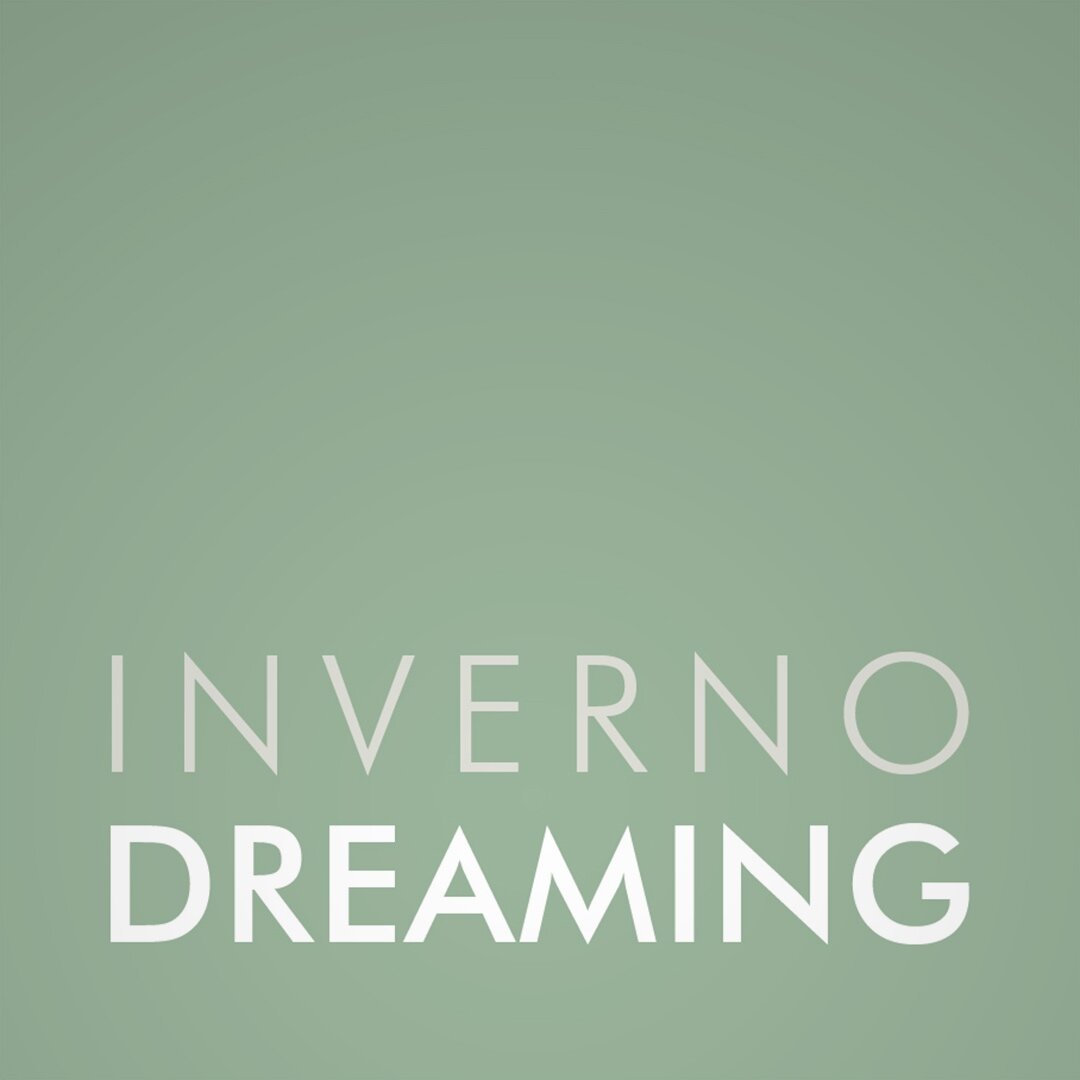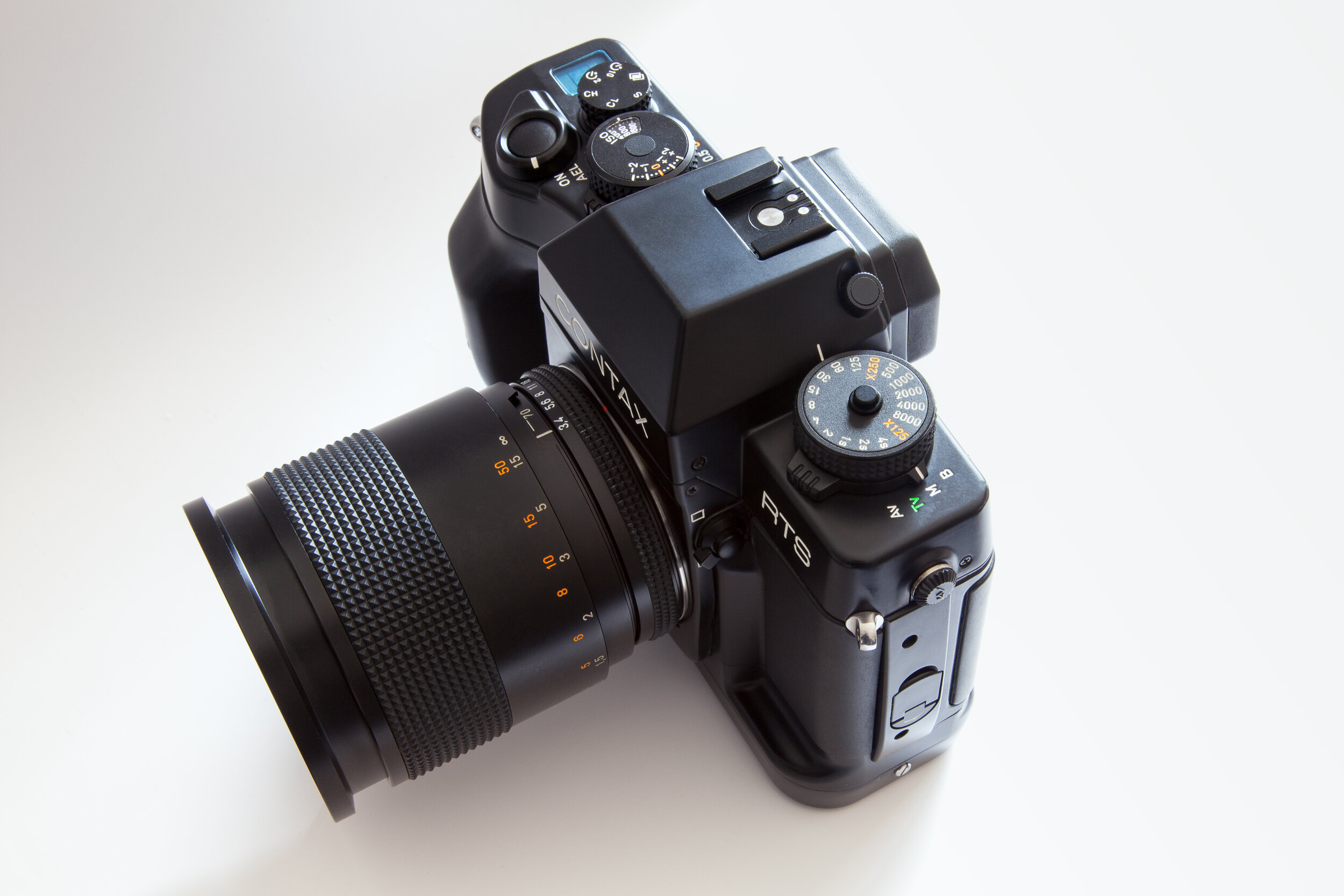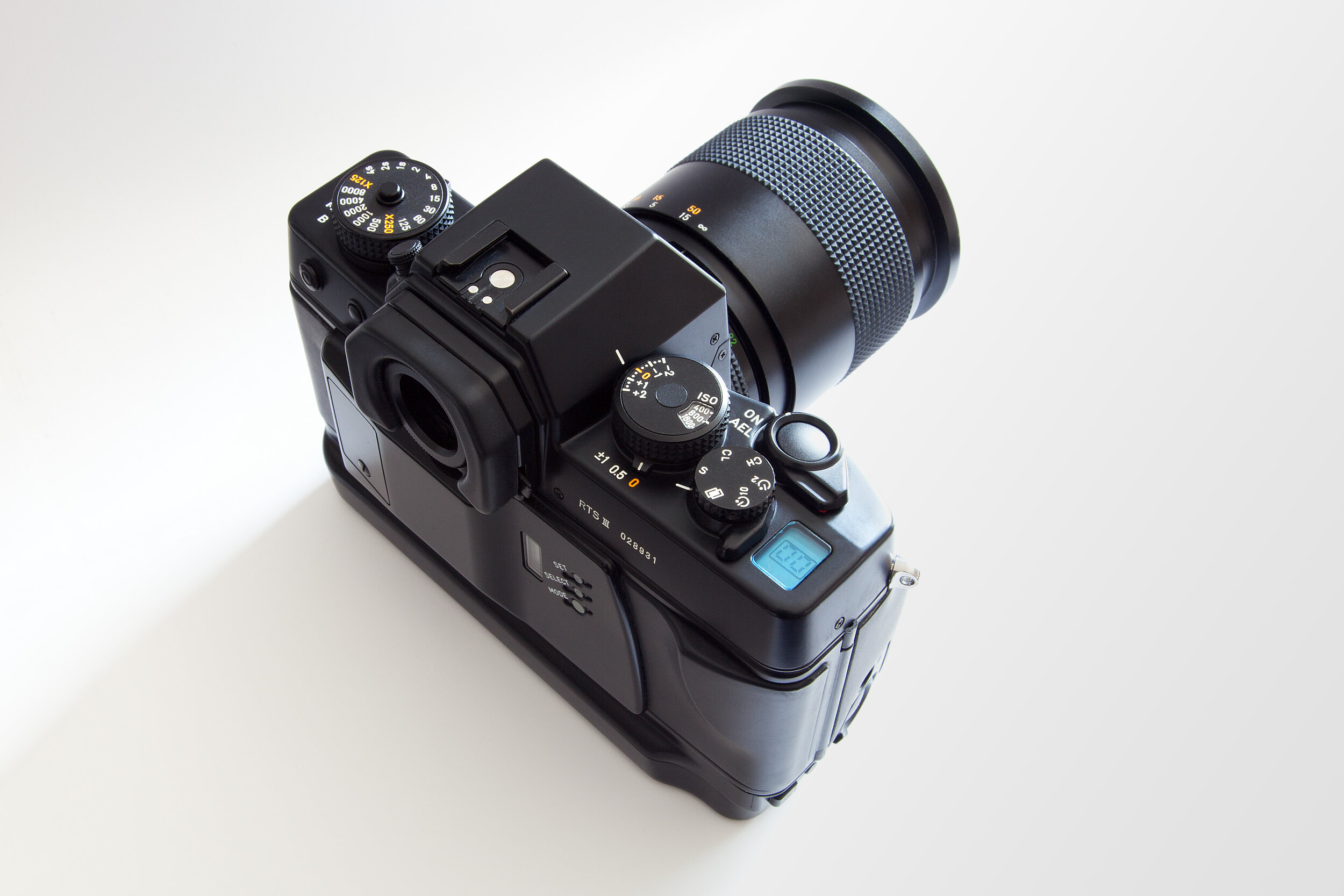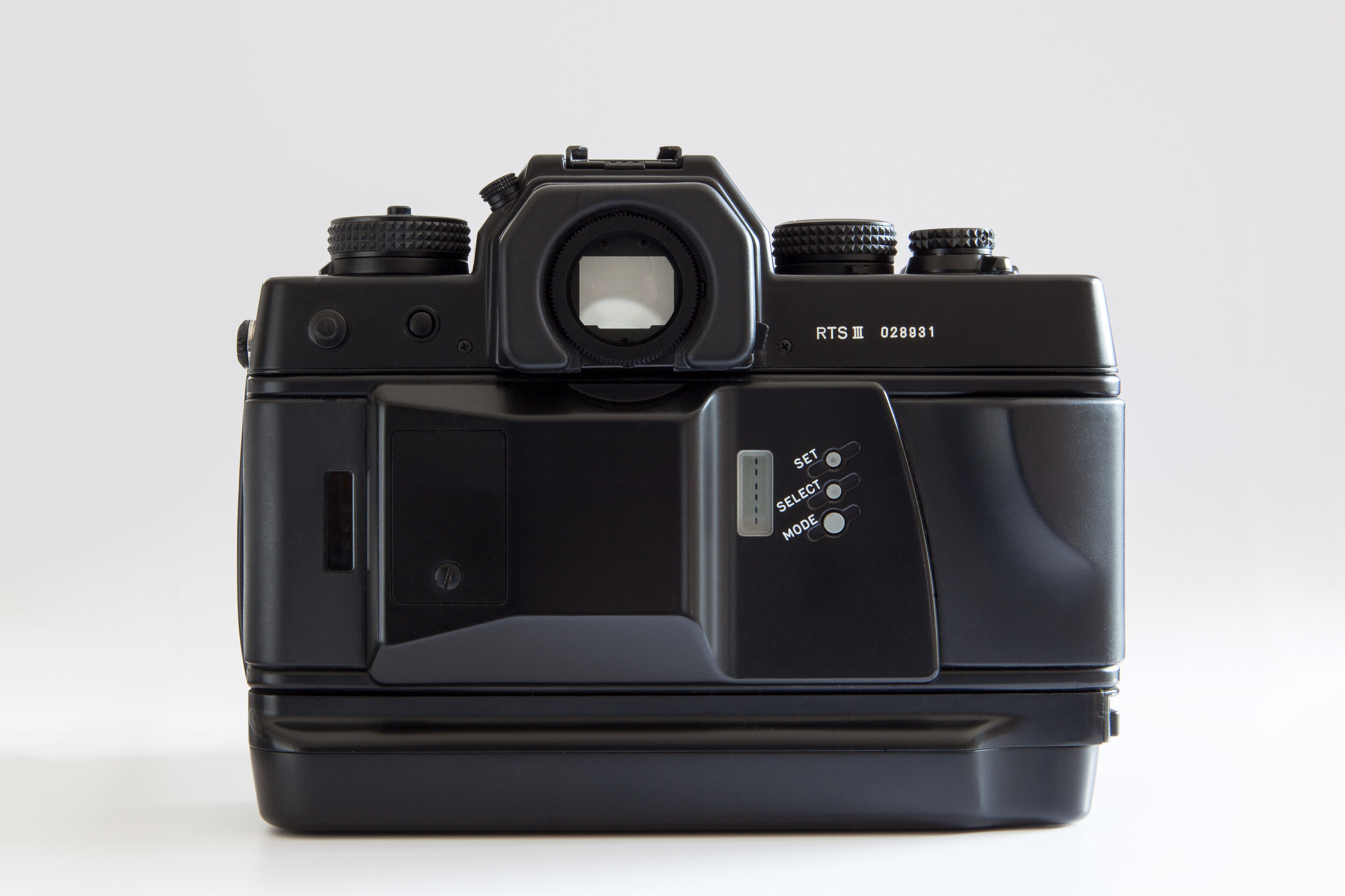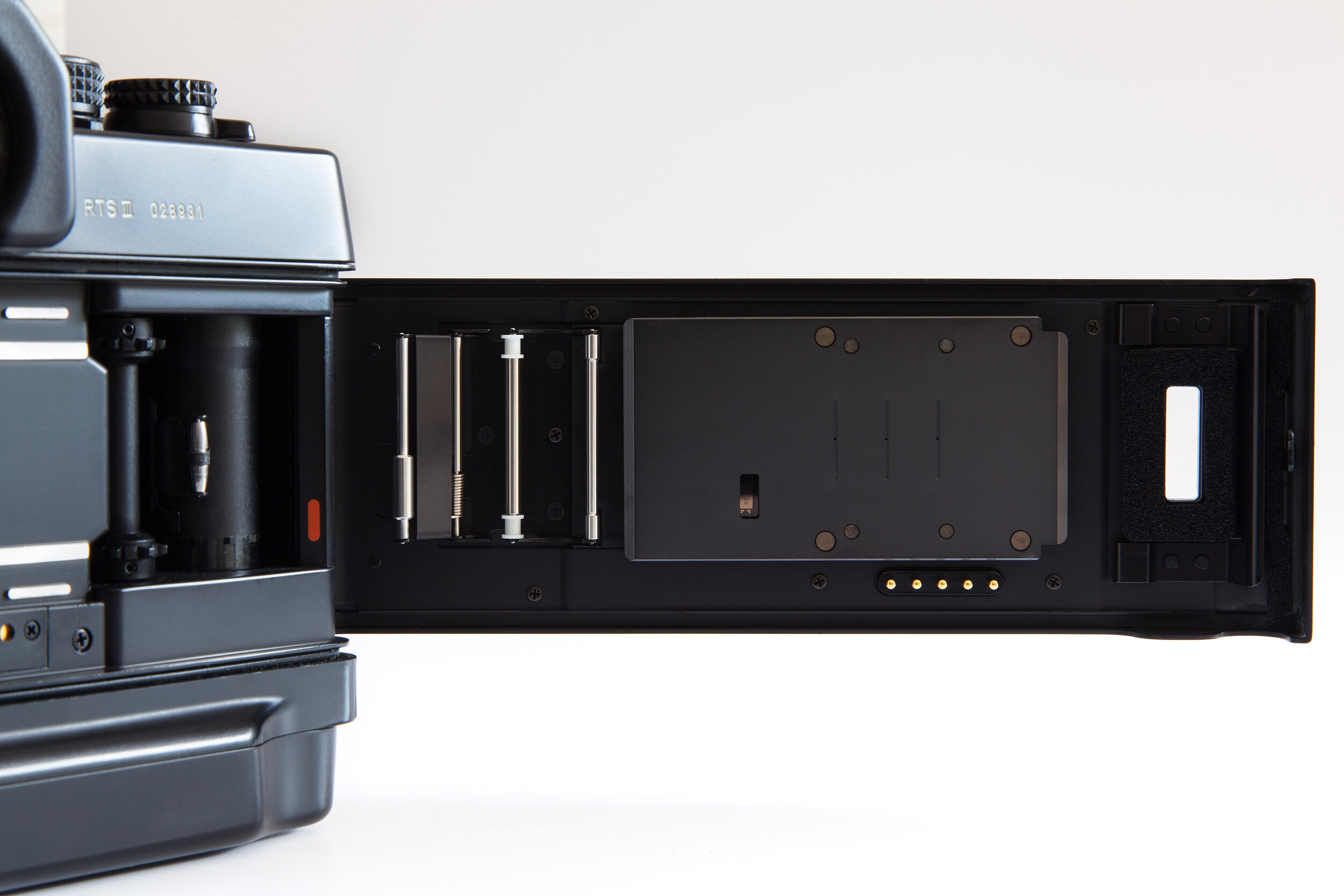Review of the legendary CONTAX RTS III &
Zeiss Vario-SonnaR T* ƒ3.4 35-70mm
Following my CONTAX S2 review in July, it got me thinking why I liked using my S2 so much more than my RTS II? After all the RTS II had some great features with its centre weighted meter and aperture priority mode, it was a more relaxed camera than the all manual S2. And yet, I did not use it nearly as much. The more I thought about it, the more I kept coming back to my perceived differences between the RTS II and S2. Yes, of course, at their core was a completely distinct design philosophy, top-line fully-featured vs stripped-down fully-manual. But in practice, the decade or more between them bought them closer together so that an all singing all dancing camera from the early 80s began to feel quite similar to a purist camera of the mid-90s. I started to think that if I was going to own and use two 35mm cameras they should be more distinctive, more different. And so I sold my RTS II and started looking for a good RTS III.
The Real Time System line of cameras was born in 1974 with the original RTS. Contax wanted it to stand out from the mid 70s crowd so they employed Porsche Industrial Design to create the elegant body and slick ergonomics of the new camera. This together with a complete selection of Carl Zeiss lenses made it an instant success and a future classic. In 1982 the RTS II was released, it was more evolution than revolution looking very similar to its predecessors satin black and leather Porsche concept but with a host of additional modern features like Quartz timing and an electromagnetically controlled titanium shutter. By 1990 the RTS III was the last Real Time System camera from CONTAX. It was a clear departure from both its predecessors, being altogether larger and heavier. Once again right up to date for the time it had all the features of any professional camera and some of its own, chief amongst them was the RTV vacuum system, more about that later. The RTS III used for the first time a built-in motor drive, something CONTAX had featured on other models since the 137MD in 1980. Spot-Pre-flash TTL function, integrated diopter, 100% viewfinder, bracketing, multi-metering modes, priority modes and data back that will imprint date and time between frames. It was and still is a very impressive camera for a 30-year old design.
As is often the case there were many RTS III examples for sale on the other side of the world in Japan but with taxes and import duties, the cost of these cameras was in my view not worth the risk. I decided that something closer to home would be better. Fortunately, after only a few days I found a suitable one available in the UK and snapped it up. There is always a risk when buying unseen on an auction site, but with care and common sense good deals are available and the reality is that with rare cameras this is often the only way to find them.
Although the RTS III is a lot bigger than both its predecessors it still retains their familiar look and feel. The original ergonomics have not been compromised, the positions of the controls and dials are in the same places and they all retain the quality precise feel that you would expect from a CONTAX camera. At over a kilo without a lens, this robust camera with its integrated grip is surprisingly well balanced and comfortable to handle. Simple is not a word I would use to describe the RTS III, for a start its got a vacuum ceramic back. A what? Kyocera the Japanese corporation who made CONTAX cameras are amongst other things specialists in ceramics. So they gave it an ultra-smooth ceramic film back that sucks the film flat against itself for super-film-plane-sharpness every time a photo is taken. I’m not convinced it makes much difference but who cares, it’s cool and I like it. Gone is the manual winder of the RTS II and me, forgetting to wind on! replaced by an integrated motor drive that is capable of 5 frames per second. Now, I could foolishly squander an entire roll of film in less than 8 seconds in a glorious hail of 1/8000 click-clack shutter fire. There is no need to only use a centre weighted meter, flick a switch and a true 3mm spot meter is also available. Mirror up, no problem, I can even close the eyepiece with a red-spotted internal curtain to stop stray light getting in that way. It’s got +1 EV or +0.5 EV bracketed exposure, a vertical titanium shutter, built-in dioptric adjustment and a 100% viewfinder with interchangeable focusing screens. Aperture and shutter speed is displayed via an attractive light blue and white LED that works perfectly until you use it on a sunny day when you can’t see anything! Then there is my favourite feature, being able to change films mid-shoot. I shoot both colour and black & white and with my medium format system, the ability to change film backs on a shoot is something I particularly value. Okay, so it’s not quite the same thing but the RTS III automatically winds the film back into the can leaving the film leader sticking out. In this way, it is possible to wind a semi-shot roll back and by taking note of the unfinished rolls last exposed frame number swapping films is practical and possible. A semi-shot roll of film can be reinserted and with the lens cap on, shutter set to maximum speed, aperture set ƒ22 and for extra security, close the eyepiece curtain, you can simply shoot back to the previously noted frame number +1 and that’s it a mid-shoot film change. Brilliant.
Talking of lenses, something I did not mention when I wrote about my CONTAX S2 last year, and because I decided to get a lens specifically for the RTS III it’s worth a mention here. I have three Zeiss lenses already, a Distagon ƒ2.8 28mm wide-angle, a Planar ƒ1.4 50mm standard and a Planar ƒ1.4 85mm for portraits. That's pretty much all my photographic bases covered. The thing is, I don’t really like changing lenses that much during a shoot and I wanted a lens that I could leave on the RTS III most of the time, a kind of catch-all flexible lens. Yes, a zoom! I know, I know it’s heresy going from prime lenses to a lazy zoom. But if you don’t try you will never know.
I decided on a Zeiss Vario-Sonnar T* ƒ3.4 / 35-70mm. Released in 1985 this beautiful Carl Zeiss lens features the usual all-metal body and has a build quality that you would expect from any Zeiss lens. Overall it is a surprisingly small and sleek design, smaller and weighing even less than a Planar 85mm ƒ1.4. With its elegant satin black surfaces and tiny pyramid rubber grips, it has a nicely dampened focusing twist and positive aperture ring. The zooming is via a push-pull zoom action. This action is a first for me, and I like it, the lens gives enough resistance to stop it accidentally moving when focusing. At the extreme 35mm end with a definite twist, the lens slips into macro focus, again another first for me and a world of new creative possibilities getting very close to my subject for the first time.
What are the pictures like? I’m happy, the lens appears as sharp as any of the primes I own. It’s a pleasure to use and its versatility makes it a perfect all-rounder, as good shooting landscapes as portraits, I see it as an excellent travel lens. I love using it at 35mm, a focal distance that seems perfect for the urban landscapes that I like so much. It’s not as fast as my other prime lenses but I try to shoot as much as I can between ƒ5.6 and ƒ8 so it’s fast enough and anyway, that’s where this lens sings. I’m not going to write about bokeh, vignetting, flair or any other technical stuff, there’s plenty of information elsewhere on the web about this and that's because in common with nearly all C/Y mount Zeiss lenses this lens is quite sought after by DSLR users. Digital photographers who fit their cameras with adaptor rings seemingly adore these lenses and so I guess the quality of classic glass is timeless.
The Vario-Sonnar T* ƒ3.4 / 35-70mm is that elusive zoom that is optically as good as a bag full of primes and if I were starting a Zeiss collection, after a Planar 50mm this will be the next lens on my list.
Considering the constraints of my existing Zeiss lenses I wanted a second 35mm SLR that offered a distinct and different photographic experience from my all manual stripped-down S2, something I felt that the RTS II did not. With the RTS III that is exactly what I now have, and a bit like the parent of two siblings each with their own attributes and character they are to me, both exceptional.
CONTAX RTS III SPECIFICATIONS
Type: 35mm metal focal plane shutter auto/manual exposure SLR camera
Lens mount: Contax/Yashica mount
Shutter: Electronic quartz-controlled, vertical-travel metal focal plane shutter
Shutter Speeds: 32 seconds - 1/8000 sec. in auto. 4 seconds to 1/8000 sec. in manual mode
Flash Sync: X setting at 1/250 sec. or slower
Selftimer: Quartz controlled electronic self-timer with either 2 or 10 seconds
Exposure Control: Auto exposure: Aperture priority, Shutter speed priority. Manual, TTL auto flash, Pre-flash TTL
Metering System: ø 3mm spot meter centre of viewfinder and centre weighted average meter
Viewfinder: 100% field of view: 0.74 magnification
Dioptric Adjustment: Internally adjustable +1D to -3D
Depth of Field: Preview button
Dimensions: 156 x 121 x 66mm
Weight: 1150g
